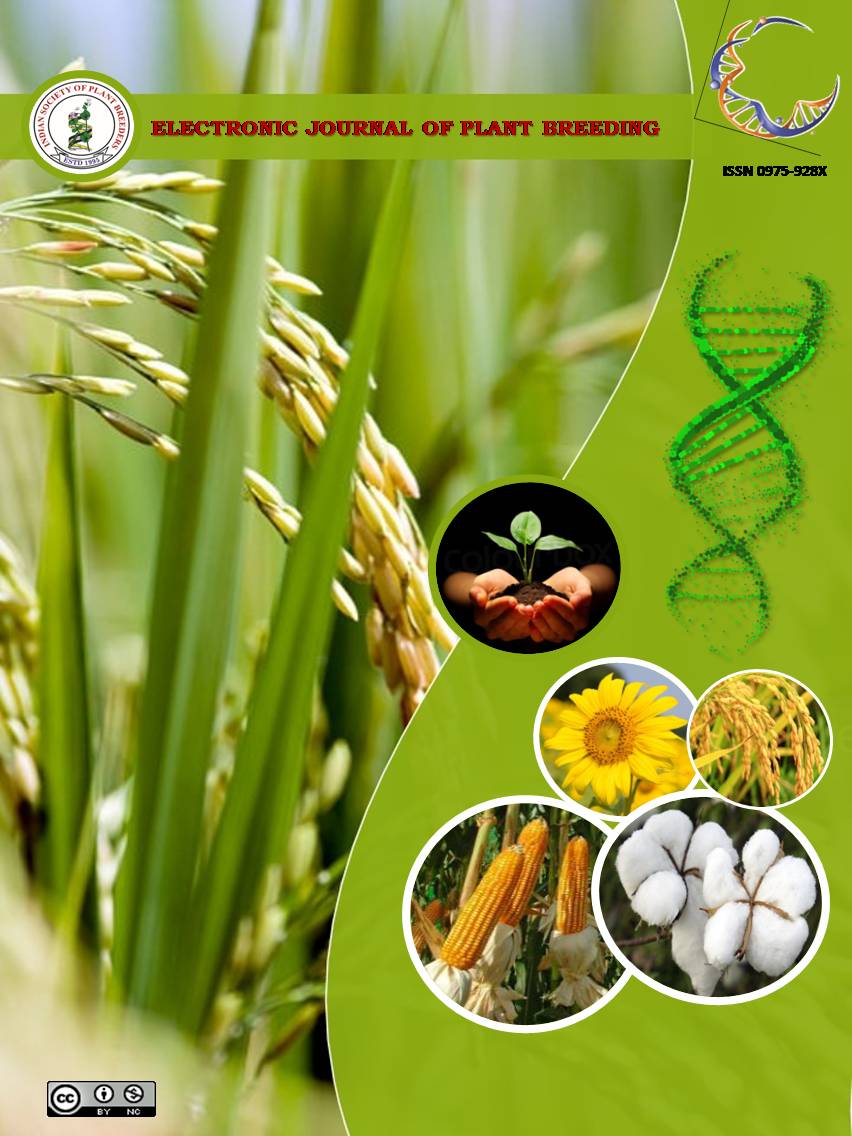High yielding wheat lines carrying superior grain and processing quality introgressed from tall traditional cultivars
Abstract
A set of 25 wheat lines derived from crosses of commercial varieties and advanced breeding lines with traditional tall varieties and other elite quality stocks were evaluated, along with 7 check varieties at 2 locations over 2 years, for their field performance as well as for grain and end-product quality. The pooled analysis of variance for agronomic traits (grain yield, days to heading, plant height, number of grains per spike and 1000-grain weight) revealed significant variation due to main effects (genotypes, locations, years) and interactions among these. Majority of the derived lines possessed yield levels at par with the highest yielding present day cultivars PBW 621 and HD 2967. Promising lines for grain yield and other agronomic traits were BWL 813, BWL 814, BWL 956 and BW 9022. Among the physico-chemical grain quality attributes, a major proportion of derived lines possessed good grain appearance and a very high grain hardness, whereas, a narrow range of variation was observed for test weight, protein content and sedimentation value. With respect to end product quality, BW 8361 was the best line for bread making. The greatest promise of the present set was found for chapati quality wherein the lines BWL 813, BWL 814, BWL 818, BWL 822, BWL 825, BWL 829, BW 9005 and BW 9022 possessed the chapati quality score of more than 8 (out of 10). The present study demonstrated the success achieved in combining high grain yield of present day cultivars with good chapati quality derived from tall traditional varieties, C 273, C 306, C 518 and C 591.

It is certified that:
- The corresponding author is fully responsible for any disputes arising due to the publication of his/her manuscript.
- The article has been seen by all the authors who are satisfied with its form and content.
- The sequence of names of authors in the by-line is as per their relative contribution to this experiment, giving due credit to all scientists who made notable contribution to it.
- All the authors fully understand that inclusion of any other co-authors or exclusion of any co-authors is not possible once the article has been submitted to the journal.
- The corresponding author takes full responsibility for this article.
- The address of the organization where the research was conducted is given.
- The article is exclusive for this journal, and the results reported here have not been sent (and will not be sent during its consideration by this journal) for publication in any other journal.
- Authors agree to abide by the objective comments of referees and do agree to modify the article into a short note as per the recommendation, for publication in the Electronic Journal of Plant Breeding.
- If published in Electronic Journal of Plant Breeding, the copyright of this article would vest with the Indian Society of Plant Breeders, who will have the right to enter into any agreement with any organization in India or abroad engaged in reprography, photocopying, storage and dissemination of information contained in it, and neither we nor our legal heirs will have any claims on royalty.


